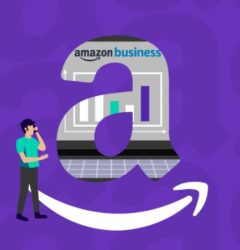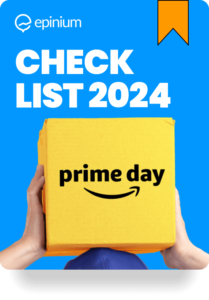In today’s blog post, we will cover the 9 most common Amazon advertising mistakes that could be making you lose thousands of dollars and simple ways to avoid them.
So, let’s get started!
Mistake #1: Not Having Good Campaign Structure
The first of the Amazon Advertising mistakes is not having a good campaign structure. This is crucial for being able to scale up your ads. Very often, we will see people grouping large numbers of products into one ad group.
While there is an exception to every rule, in general, you want to keep the number of ASINs (product detail pages) in your ad group as small and similar as possible.
Whenever you start campaigns for groups of products, we recommend that you consider one ASIN per ad group. The reason for this, comes down to Amazon’s reporting.
On Amazon, your reporting doesn’t show you which search term actually converted to which product. All you can see is how each search term performed, not how each search term performed with each ASIN in an ad group.
Mistake #2: Thinking of Amazon as Google
As mentioned in previous blog posts, when moving from Google Ads to Amazon’s Ads program, some people mistakenly think they can apply the same strategy for both platforms.
While the term and overall principles are similar, Amazon ads are actually structured very differently.
If you are planning on running your ads, we highly recommend you use the Amazon Advertising resources offered in the Amazon Learning Console.
Mistake #3: Changing things & Shifting Ad Budget Too Early
Although it is widely known that new Google or Facebook ad campaigns have a learning period of time, very often people forget that when it comes to running ads on Amazon.
Like the majority of ad platforms, you need to give your campaigns 7 to 14 days of run time before making any significant changes.
On top of the traditional learning phase for a campaign to begin to run at its optimal potential.
You also need to know that the reporting for Amazon advertising comes with 48-hour delay for most reports. You should to take this delay into account when adjusting your campaigns.
Also,manual campaigns in Amazon can take up to 30 days to be mature enough.
Mistake #4: Not Using All Amazon Resources
Even though Amazon can feel like the wild, there are still a lot of resources available for those trying to keep updated.
The Learning Console provided lots of courses and test and it allows you to be certified by Amazon to run ads.
Such courses are deep and cover a lot of the details and definitions that you will need when running ads on Amazon.
The Amazon Learning Console allows you to be certified in Amazon Sponsored Products.
Mistake #5: Not Controlling Your stock levels
On Amazon, conversions are everything. Organic ranking and the effectiveness of your campaigns highly depend on you controlling your inventory levels.
If a product runs completely out of stock, it stops all potential conversions from happening, which gives your competitors a chance to increase sales and market share.
Also, when you run out of stock on Amazon, your ads will stop showing automatically and sadly, any improvement you achieved in the organic search rank with advertising will be lost.
If you see that you are running low on inventory, decrease your ad spend to reduce the velocity of sales to prevent going out of stock before your replenishment arrives at Amazon.
Mistake #6: Ignoring Keyword Research
Targeting the right number of keywords can be a delicate balance on Amazon.
While it is true that you can alter your budget and results by focusing on too many keywords, you can also miss out on sales by only doing low quality keyword research.
One relevant benefit of running ads on Amazon is that you can test which bottom of funnel keywords convert for your product. Ideally, you should test at least 50-500 keywords for each ad group.
Last, but not least, you want to make sure that you are testing different match types since that exact or broad might not be a “better” match type.
Different products do best with varying kinds of match types. So, test in all the match types before scaling up your ads.
Mistake #7: Using Only Bid Adjustment to control Your ACOS
Yet, another common thing we notice when auditing accounts for potential clients is that bids and overall daily campaign budgets have been the main thing to use to control the ACoS or ROAS (return on ad spend).
While both managing your spending through adjusting bids and budgets is essential, you want to be sure you are making those adjustments strategically.
If you have keywords that are generating good results at a bid that is higher than your budget can take on, then you could simply lower the budget on keywords that are not performing as well so that more budget is placed on the keywords that are performing well.
If you have a good structure for your campaigns, you can also modify your budgets with portfolios.
This allows you to keep the bids and budgets in the desired campaigns where they are, and at the same time, control the total amount spent for that portfolio as the portfolio budget limit will nullify your campaign budget.
Mistake #8: Not boosting Profitable Campaigns
Although it can be challenging to convince your manager to increase an ad budget significantly, it is important to emphasize the benefits of boosting those well-performing campaigns.
Lots of Sellers set monthly budget. Most of the time, they do not want to go over this allotted amount even if their ads are performing well, and this is one of the biggest amazon advertising mistakes.
However, this Sellers should increase their budgets so they can capitalize on the potential traffic on Amazon.
While the main benefit is the boost in profitable sales, ensuring you are maximizing the campaign can help to prevent competitors from using profitable keywords to decrease your potential market share.
Mistake #9: Not Ensuring Your Listings Are Converting
Did you know that your listing optimization and conversion history can affect how your ads are being served?
A bad optimized listing may not be perceived as important for the keywords of your campaigns, and this can directly influence the number of impressions your ads get.
If you are an Amazon Seller, before you run any ad, you should go to Reports > Business Reports > Detail Sales and Traffic by Child report and check the ASINs you are looking to advertise.
If you do this, you will be able to see page views and sessions. This will allow you to make sure that your listing is in fact converting the traffic before driving more traffic into it.
Major Takeaways
Up until now, advertising on Amazon used to be optional, yet it has turned into a must for most products when being launched and for their ongoing growth on Amazon.
However, Amazon can be a complex platform to work in.
Understanding logistically how organic and paid search are linked and staying updated on what is currently working for Amazon advertising can actually keep you a step ahead of your competition, and avoid make Amazon advertising mistakes.
As always, we hope you liked our post. Please leave a comment in the comments section below if you have any question.






